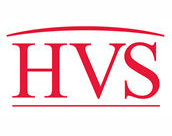By Daniel P. McCoy, Sara E. Olson and Dorothy A. Jennings
Encouraging news about hotel demand, investment, and new supply inspires optimism at this year’s hospitality conference.
Keynote speakers and workshop panelists at the 2015 NYU International Hospitality Industry Investment Conference, held June 1 and 2 at the New York Marriott Marquis, highlighted positive industry fundamentals that support a very optimistic outlook for the hotel industry. The tide of optimism spread through some 2,300 attendees from every corner of the industry. Increasing hotel supply and rising interest rates remain the most conspicuous potential stumbling blocks in the current economic cycle. Concerns, however, were all but assuaged by encouraging presentations from some of the industry’s most prominent figureheads.
Capital Market Trends
Speakers and delegates noted an abundance of low-cost debt and equity sources pursuing hotel investments across asset classes and markets. Foreign investors seeking a safe haven from turmoil and risk abroad are increasingly turning to U.S. commercial real estate such as hotels as a source of relatively stable and strong yields. Meanwhile, domestic private equity funds continue to seek stronger returns by venturing into secondary and tertiary markets and are more willing to take on value-added and repositioning opportunities. Furthermore, general commercial and high-net worth investors are attracted to the hotel sector’s reasonably strong yields compared to other commercial classes of real estate.
Within the debt markets, financing for existing assets is readily available from a variety of sources, including institutional lenders, private equity funds, CMBS markets, and community lenders. Experts in this field reported that debt terms are increasingly favorable, with loan-to-value ratios for first mortgages typically falling between 65% and 75%. Interest rates remain low, particularly for larger single-asset and portfolio loans. Although rates are widely expected to rise over the next 12 to 18 months, most increases should not negatively affect hotel values and could be offset by decreasing equity yield requirements. Construction lending is reportedly available, though on a more limited basis than debt for existing properties. Finding loans for new hotel construction is most challenging for middle-market deals; that is, those that fall somewhere between the regional owner-operator working with a community-based lender, and major development groups with ties to institutional debt sources.
Limited Supply Growth
For the majority of U.S. markets, the aforementioned factors influencing construction financing, as well as rising construction costs, are expected to keep supply growth in check in the near term. Some markets, including New York City and Houston, are already experiencing the impact of new supply growth outpacing that of demand. But these are isolated cases. For the time being, new construction is predominantly of limited- and select-service hotels with relatively small room counts (fewer than 200 keys). While these types of developments may affect individual tertiary markets and suburban submarkets, overall supply increases in most major MSAs, and the nation as a whole, should remain at manageable levels.
Demand Fundamentals Are Strong
The short- and long-term outlook for travel and tourism demand, both within the U.S. and around the globe, remains positive. Domestically, strong corporate profits continue to boost transient commercial travel and are finally beginning to revive the meeting and group segment. Meanwhile, a robust stock market and the recovery of wealth underpin strengthening demand for transient upscale and luxury accommodations. Furthermore, lower gas prices and modest wage increases are improving discretionary spending among the middle class, with positive implications for overall leisure travel. Moreover, recent improvements in U.S. visa policies, along with increased international travel promotion by the U.S. government, are expected to bring more tourism demand from abroad. The great expansion of middle or so-called “commercial” classes of developing nations such as China, India, and Brazil should bring more travelers to international markets, including the U.S.
Evolution of the Guest Experience
Guest preferences are altering the food and beverage offerings at hotels. Outside of the major urban markets, full-service hotel operations face a particular challenge. While beverage departments have potential to generate profits, food department deficits were reported to put some hotels in the red. This, among other factors in a changing hotel climate, has raised interest in select-service brands, as well as full-service “light” concepts such as DoubleTree by Hilton.
Technology continues to change the hotel guest’s experience, influencing everything from marketing to booking, from a hotel stay to post-trip reflections. According to Cyril Ranque, President of Expedia Lodging Partner Services, 90% of people who booked online in 2014 either booked or searched for hotel rooms using a mobile device or a tablet. The advance of new technologies is further driven by younger travelers’ desire for direct access and greater efficiency when it comes to hotel booking, check-in, and services. The implementation of mobile check-in, better and complimentary Wi-Fi service, service automation, and increased participation on social media sites all illustrate this trend. Experts noted, however, that this push for more advanced technology must be balanced by personalized, attentive service from hotel staff. As Stephen Wynn stated during his presentation, “it comes down to two words: Guest Experience.”
The Up-Cycle Continues
HVS expects supply and demand for the U.S. hotel industry to remain in equilibrium through this year and next, putting the industry on strong footing into at least early 2017. Investors at the NYU conference sounded more knells of optimism, shedding light on a variety of financing options for hotel transactions and new builds. This historically cyclical industry has already witnessed several years of sustained growth, but developers, owners, educators, and experts at the conference showed no concern about imminent decline. On the contrary, the fundamentals supporting the current upward trend remain strong, which should result in positive results for U.S. hotels well into the next two years.





